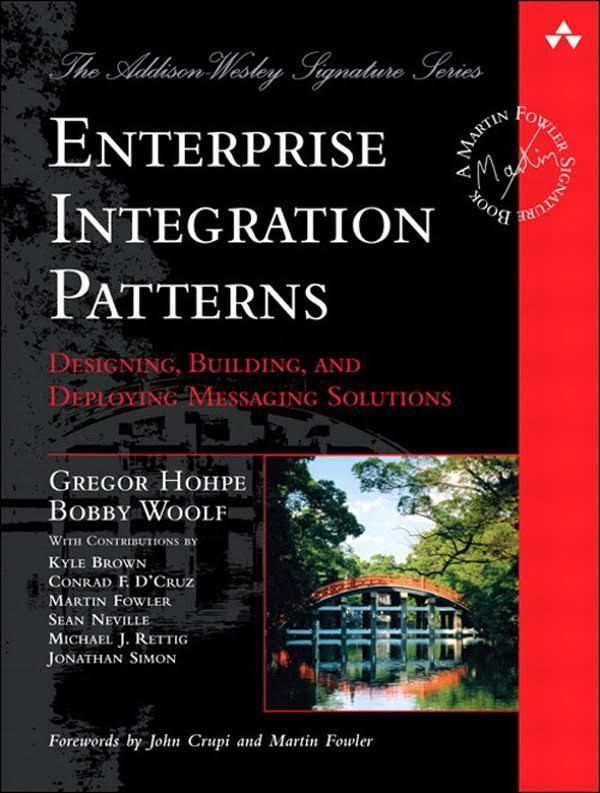Language English Originally published January 2004 | ISBN 978-0321200686 | |
 | ||
Series Martin Fowler Signature Series Subject Enterprise integration pattern Similar Patterns of Enterprise Applicatio, Design Patterns: Elements, Camel in Action, Domain‑driven design, Refactoring | ||
Applications of enterprise integration patterns to near real time radar data processing
Enterprise Integration Patterns is a book by Gregor Hohpe and Bobby Woolf and describes 65 patterns for the use of enterprise application integration and message-oriented middleware in the form of a pattern language.
Contents
- Applications of enterprise integration patterns to near real time radar data processing
- The Integration Messaging Pattern Language
- Integration Styles and Types
- Messaging
- Message Channel
- Message Construction
- Message Router
- Message Transformation
- Message Endpoint
- System Management
- Implementation
- References
The Integration (Messaging) Pattern Language
The pattern language presented in the book consists of 65 patterns structured into 9 categories, which largely follow the flow of a message from one system to the next through channels, routing, and transformations. The book includes an icon-based pattern language, sometimes nicknamed "GregorGrams" after one of the authors. Excerpts from the book (short pattern descriptions) are available on the supporting website (see External Links).
Integration Styles and Types
The book distinguishes four top-level alternatives for integration:
- File Transfer
- Shared Database
- Remote Procedure Invocation
- Messaging
The following integration types are introduced:
Messaging
Message Channel
Message Construction
Message Router
Message Transformation
Message Endpoint
System Management
The pattern language continues to be relevant as of today, for instance in cloud application development and integration, and in the internet of things. In 2015, the two book authors reunited - for the first time first time since the publication of the book - for a retrospective and interview in IEEE Software
Implementation
Enterprise Integration Patterns are implemented in many open source ESBs, including Talend, Spring Integration, WSO2 ESB, Apache Camel, Red Hat JBoss Fuse, Mule ESB or Guaraná DSL.
